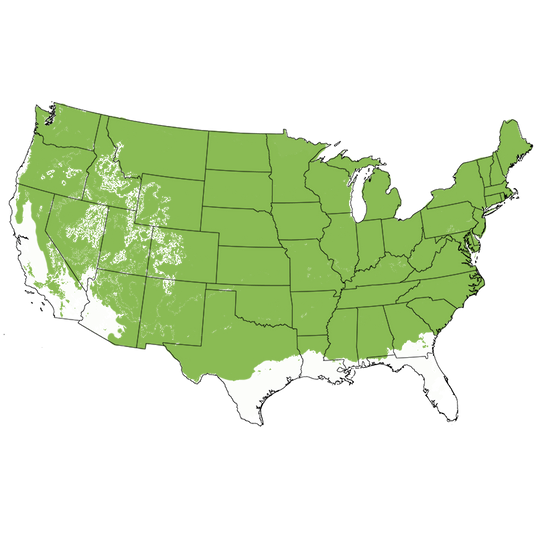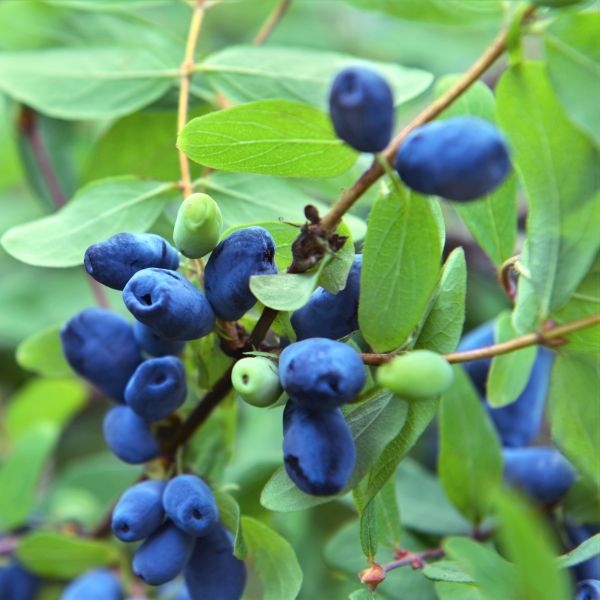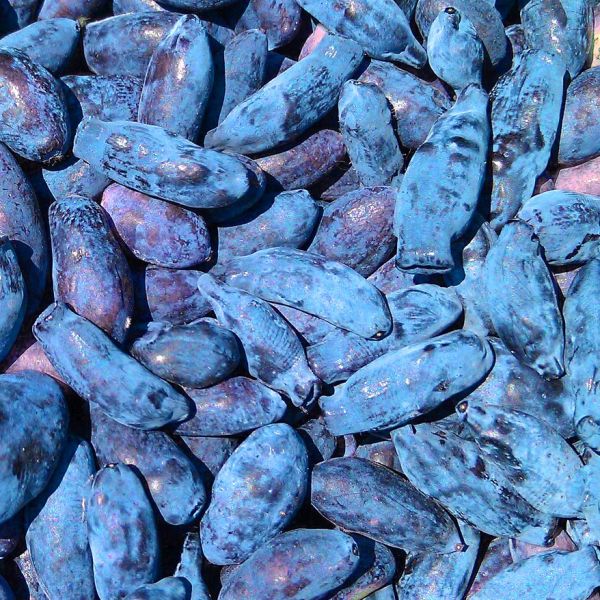Berry Blue Honeyberry Plant
Lonicera caerulea var. kamchatica 'Berry Blue'
Plant Sentry™
Plant Sentry™

Plant Sentry™ Protected
Your order is protected by our compliance system that:
- Prevents restricted plants from shipping to your state
- Ensures plants meet your state's agricultural requirements
- Protects gardens from invasive pests and diseases
Delivery and Shipping
Delivery and Shipping
Delivery and Shipping
Fast, Safe Plant Delivery
Ships in 3-4 business days • Tracking provided • Weather protected
| Under $50 | $9.99 |
| $50 - $99.99 | $14.99 |
| $100 - $149.99 | $16.99 |
| $150 - $198.99 | $24.99 |
| $199+ | FREE |
✓ Zone-specific timing • ✓ Professional packaging • ✓ Health guarantee
Understanding Plant Options
Nature Hills offers plants in two main formats:
- Container Plants: Grown in pots with soil, sized by container volume and plant age
- Bare Root Plants: Dormant plants without soil, sized by height measurements
Container Plant Sizes
Container sizes indicate plant age and growing capacity rather than liquid volume equivalents. Our containers follow industry-standard nursery "trade gallon" specifications, which differ from standard liquid gallon measurements.
Young Plants (6 months to 18 months old)
| Container Size | Actual Volume | Metric Equivalent |
|---|---|---|
| 2" x 2" x 3" | 0.18 - 0.21 dry quarts | 0.20 - 0.23 dry liters |
| 4" Container | 0.31 - 0.87 dry quarts | 0.35 - 0.96 dry liters |
| 4.5" Container | 0.65 dry quarts | 0.72 dry liters |
| 6" Container | 1.4 dry quarts | 1.59 dry liters |
| 1 Quart | 1 dry quart | 1.1 dry liters |
| 5.5" Container | 1.89 dry quarts | 2.08 dry liters |
Established Plants (18 months to 2.5 years old)
| Container Size | Actual Volume | Metric Equivalent |
|---|---|---|
| 2 Quart | 2 dry quarts | 2.2 dry liters |
| #1 Container | 2.26 - 3.73 dry quarts | 2.49 - 4.11 dry liters |
| 5" x 5" x 12" | 3.5 - 4.3 dry quarts | 3.85 - 4.74 dry liters |
Mature Plants (2-4 years old)
| Container Size | Actual Volume | Metric Equivalent |
|---|---|---|
| #2 Container | 1.19 - 1.76 dry gallons | 5.24 - 7.75 dry liters |
| #3 Container | 2.15 - 2.76 dry gallons | 8.14 - 12.16 dry liters |
Large Plants (3-5 years old)
| Container Size | Actual Volume | Metric Equivalent |
|---|---|---|
| #5 Container | 2.92 - 4.62 dry gallons | 12.86 - 20.35 dry liters |
| #6 Container | 5.25 - 6.01 dry gallons | 23.12 - 26.42 dry liters |
| #7 Container | 5.98 - 6.53 dry gallons | 26.34 - 28.76 dry liters |
Bare Root Plants
Bare root plants are sold by height from the root system to the top of the plant. Plants may exceed minimum height requirements.
Common Sizes:
- Trees: 1 foot, 2 feet, 3 feet, 4 feet, 5 feet, 6 feet
- Shrubs & Perennials: 1 foot, 18 inches, 2 feet
Important Notes
Container Volume Specifications
- Trade Gallon Standard: Our containers follow industry-standard "trade gallon" specifications established by the American National Standards Institute (ANSI Z60.1) for nursery stock
- Volume Variations: Actual soil volume may vary due to plant root systems and growing medium settlement
- Age Indicators: Container size primarily indicates plant age and maturity rather than liquid volume equivalents
Growing Conditions
- Plant size can vary based on variety and growing conditions
- Container size helps indicate plant maturity and establishment level
- Larger containers generally mean more established root systems and faster landscape establishment
Seasonal Availability
- Bare root plants are available seasonally when dormant
- Container plants are available throughout the growing season
- Specific varieties may have limited availability in certain sizes
Questions?
For questions about specific plant sizes or availability, please contact our plant experts who can help you choose the right size for your landscape needs.

Plant Sentry™ Protected
Your order is protected by our compliance system that:
- Prevents restricted plants from shipping to your state
- Ensures plants meet your state's agricultural requirements
- Protects gardens from invasive pests and diseases
Plant Profile & Growing Essentials
Cold hardy, Flowering, Edible, Ornamental Berries/Fruit, Thornless, Attracts pollinators, and Container Friendly
Specifications
Specifications
-
Botanical Name
-
Height
-
Width
-
Growing Zones
-
Sunlight
-
Growth RateFast
-
Flower Color
-
Leaf Color
-
Pollinator FriendlyYes
-
Pollinator Required
-
FragrantYes
-
Bloom PeriodEarly Spring
Planting & Care
Planting & Care
Catch the Honeyberry Craze! The Berry Blue Honeyberry (Lonicera caerulea var. kamchatica 'Berry Blue') will become the star of your garden! Relatively new on the scene in America, though it's been around for a while. It is just now beginning to catch on in home gardens. It is a sweet but tangy fruit with a flavor like wild blueberries and currants. Delicious, healthy, and packed full of antioxidants and vitamins, Honeyberry are considered Superfruits for a reason!
The pretty plants have small cream-colored flowers in the spring and nice flat-green leaves through the fall. They ripen in early summer, a full two weeks before the strawberries begin to redden up It is native to parts of Siberia - yes, THAT Siberia where winters are colder than cold. If it can survive there, you know that it will make it in your northern garden without batting an eye.
Also known as the Haskap berry, they are great eaten fresh out of hand, but they are fantastic when made into jam, plus you'll be the star of the farmers market! Berry Blue needs a pollinator, so order one of her sister plants, too, like Tundra Honeyberry or Honeybee™.
Planting and Application:
Keeping your bush under a net while growing is a great way to ensure the berries aren't enjoyed by the wildlife before you can get to them yourself. Not only are wildlife attracted to these juicy fruits, but they also attract many pollinators! Butterflies and bees will flutter about your garden!
These bushes are great backdrops to vegetable and herb gardens or as accents and unique specimens in large pots and planters. Growing a hefty 6-8 feet in height and 4-8 feet in width, there are few deciduous shrubs that have such delicious fruit while providing privacy and screening too!
- Delicious Sweet-Juicy Fruit
- Fast Growing
- Unique Healthy Superfruit
- Spring Flowers
- Cold Hardy Zones 3-8
#ProPlantTips for Care:
Honeyberry bushes do best in full sun, you’ll get the most fruit in at least 6 hours of direct sunlight a day. Loving consistent moisture and enriched soil, be sure to provide a thick layer of mulch over the soil surface to hold in moisture and insulate the roots.
We bet you'll be the first in your circle to have some of these, so order now before your friends beat you to it. Order your own Berry Blue Honeyberry and its pollinator today from NatureHills.com!











